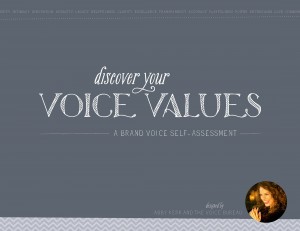Why do you want to learn to write great sales copy?
. . . So that your website can work much harder for you than it is now — which means YOU get to work (slightly) less hard?
. . . So that your “sales copy” starts feeling not so different from any other copy on your site, because it’s written in the same voice, tone, and style?
. . . So that you can stay humble, realistic, and centered even while standing confidently beside (or behind) what it is you’re offering?
If any or all of the above resonate, please keep reading.
Here’s your first copywriting lesson: ‘great’ sales copy is relative. Relative to you. Relative to your business and your goals for your business. Relative to your brand and how you want it to show up in the online conversation. Relative to your Right People — who they are, who they are trying to become, and how they want to feel and see themselves reflected back when they engage with your offer.
Greatness is relative because different people see ‘great’ differently.
This is why mimicking another writer’s voice or style when writing your sales copy isn’t going to work out so well. Speaking to your readership the same way someone else speaks to theirs doesn’t propel you in the direction of making your business work better for you and your Right People. (When taken to the extreme, mimicry can even slow you down quite a bit.)
But mimicry is a part of growth. We’ve all done it [watch out — ancient post alert] and at some level, we’re all doing it still. We learn from models and mentors.
The best question to ask yourself is: what works about that writer’s sales copy and why does it work? Seeing the WHY behind the technique or the choice is a higher level skill and one you can absolutely develop. (It’s one of the things I most LOVE to teach my clients inside my courses.)
Secret of Great Writing, No. 751:
Want to know how almost all great writers have become great?
At some point in their development, they began to read like a writer reads. When you read like a writer reads, you begin to notice what a writer notices. And when you notice what a writer notices, you can begin to write like a writer writes. Not just any writer — you, as the greatest writer you’ve been yet.
When writers read (and I mean read anything, from novels to magazine ad copy to Netflix’s description of a series), they analyze things like sentence structure, word placement, word choice, and yes, even the use of white space on the page. Writers are sensitive to how every choice made on the page affects the whole.
Learn to read sales copy like a copywriter reads sales copy. Look behind the magic, the spin, the schmaltz, and the rhythm of language to understand that great writing is putting word after word after word on the page, having a reason for each word to be there, and having the reason be connected to the big outcome you’d love to create.
What’s the big outcome you’d love to create with your next sales page?
Do you want to enroll seven women who have coached with you privately in the last year in a high level Mastermind, where they can be supported by other women you just know they’re going to dig so hard?
Do you want forty people at your next live event, people who are really ready to do the work you’ll facilitate?
Do you want to try out online teaching with a group of your favorite readers and a pet topic to see if it’s something you’d like to do more of?
Do you want to enroll as many of your Right People as possible in a tiny free offer that’ll provide you with the feedback you need to cultivate your future big offer?
Do you want to work on more custom commissioned pieces this year, so you can grow your portfolio and win a spot at the important tradeshow that could be your big break?
Do you want to sell enough e-courses to buy that emerald color midcentury sofa from Dot & Bo before your best friend from college travels across country to visit you?
Do you want to finally publish a sales page that actually does justice to the work that happens behind the scenes with your clients and customers?
All of these are valid reasons for wanting to write a great sales page for your Right People. And for you and your business.
Please don’t feel sheepish about wanting to learn to sell more effectively.
If you’re intent on having a business of your own that relies on the internet for most (or ALL) of your marketing, then you’ve got to learn to sell well with words. Selling with words requires you to master some very specific mindsets, skill sets, and insight sets. Chances are, these are mindset, skill set, and insight sets you may not yet have. And that’s okay.
I created Writing the Conversational Sales Page because my clients and readers are super interested in mastering the mindsets, skill sets, and insight sets needed for selling online.
There’s no other course out there that I’m aware of that equips values-based, solo and small business owners who want to sell e-courses and e-books; programs, workshops, and events, or creative and custom services, to their particular Right People — and to do so with elegance and integrity. Until now.
If you’re pretty sure that writing better sales pages is the next frontier in your own business, please have a look at Writing the Conversational Sales Page. Registration is on for the next 3-½weeks, but Priority Pricing (read: the best value) ends this Friday the 15th.
Who among my Right People are signing up? So far, we’ve got a career coach, an earth-centered spirituality mentor, a birth doula, multiple coaches of various stripes, several writers and editors, and others. To a one, they are smart, subtle, sensitive types who consider themselves good writers and are ready to learn a whole new approach to making high quality offers via writing.
What are YOUR Right People wanting and waiting to do with you?
Go here now to check it out, and to join us.
(Image credit.)
{ 3 comments }




 I’ve developed and methodologized a way for you as a business owner to understand your own brand voice — originating out of your natural communication strengths, but to be beheld as an entity separate, complete, and organic unto itself.
I’ve developed and methodologized a way for you as a business owner to understand your own brand voice — originating out of your natural communication strengths, but to be beheld as an entity separate, complete, and organic unto itself. Hello, you.
Hello, you.